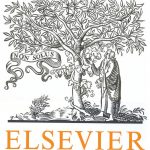
ترجمه مقاله نقش ضروری ارتباطات 6G با چشم انداز صنعت 4.0
- مبلغ: ۸۶,۰۰۰ تومان

ترجمه مقاله پایداری توسعه شهری، تعدیل ساختار صنعتی و کارایی کاربری زمین
- مبلغ: ۹۱,۰۰۰ تومان
Abstract
Purpose This research studies the effect of internal branding on brand supporting behaviour (in-role and extra-role) of bank employees in Egypt. It proposes a model which examines the relationship between internal branding and employees’ brand supporting behaviour, mediated by employees’ role clarity, affective commitment, and continuance commitment, in order to provide insights into the way in which employees can become brand champions. Design/Methodology/Approach A single cross-sectional descriptive research was employed. A questionnaire was used to collect data from 400 frontline bank employees. Confirmatory Factor Analysis was used to test the validity of the scales, and Structural Equation Modelling was used to test the research hypotheses. Findings The results showed that internal branding did not have a direct significant impact on employees’ in-role and extra-role behaviour. However, that impact only took place through employees’ role clarity and their affective commitment. Implications The findings suggest that banks can differentiate their offers and build powerful corporate brands through their employees’ brand supporting behaviour. Therefore, bank managers need to consider internal branding within the context of a corporate marketing orientation. Moreover, enhancing employees’ role clarity and affective commitment will ensure sustainable brand supporting behaviour. Originality This research is the first quantitative study to examine the impact of role clarity and continuance commitment as possible mediators to the proposed relationship. It further adds up to the internal branding literature, which is mostly qualitative or conceptual and thus suffers from limited conclusive evidence in terms of internal branding benefits and practical implications.
7. Limitations of the Study and Suggested Future Research
The following three limitations may affect the generalization of results. However, these limitations may also provide fruitful areas for future research. First, more research is needed to understand the antecedents of continuance commitment in the Egyptian banking context, since the R2 of continuance commitment is considered weak (0.041) indicating that internal branding, which is supposed to result in “education and organisational-specific knowledge and skills” (Meyer et al., 2002), explains only 4% of continuance commitment. Second, the sampling frame of frontline employees working in retail divisions of banks could not be accessed; consequently snowball sampling was used to select the sampling units. The present study can be replicated in other service organisations, where sampling frames can be accessed and probability sampling techniques can be employed. Third, the current research was conducted in branches of banks operating in three large Egyptian cities (Cairo, Giza and Alexandria). Therefore, the model of the present research can be reincorporated to be conducted in other high contact service industries (such as insurance companies, telecommunications and airline companies) and in other cities and countries. Furthermore, this research extends the literature of the mediating effects of role clarity, affective commitment, and continuance commitment. Multiple parallel mediation analysis was used as it concentrates on analyzing the effects of multiple mediators without taking their inbetween relationships. Thus, future studies may examine the series of multiple mediation of the causal effect of these mediators (e.g. role clarity on affective commitment) (Mukherjee and Malhotra, 2006) on the relationship between internal branding, in-role and extra-role brand behaviour.